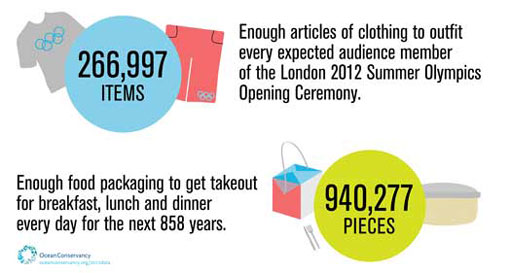You are hereliving
living
"Bored to death? It really could happen..." Nature gives life, shouldn't life aspire to / be inspired by Nature?

(quote)
Science Shows You Can Die of Boredom, Literally
Monthly magazines from Reader's Digest to Cosmopolitan are inundated with tips on how to sleep better, find happiness, and weave seriously sexy hair. Taking nothing away from being happy and blowing your romantic partner's mind on valentine's day, there are few things as valuable as staying alive...Try to withhold your skepticism for a moment as I share a brand new scientific discovery:
The more bored you are, the more likely you are to die prematurely
Over 7,500 London civil servants aged between 35 and 55 were interviewed in the late 1980's. Among other questions, they were asked if they felt bored at work during the past month. These same people were tracked down to find out who died by April 2009. What the researchers found was that civil servants who reported being very bored were 2.5 times more likely to die of a heart problem than those who hadn't reported being bored. You might be asking yourself, what the %$#@ does this mean? To put this into perspective, consider this fact by the American Heart Association: Smokers are two to four times likely to develop coronary heart disease than nonsmokers. People with a molotov cocktail of obesity, high blood pressure, and high blood sugar (that is, all three at once) are twice as likely to have a heart attack and three times more likely to die earlier than the rest of the population. This means that death by boredom is right up there with the favorite targets of media fear mongering, public policy, and pharmaceutical companies. Nobody is talking about boredom while people whine and die quietly at workplaces around the world. read more »
Oceans of trash? >9 million volunteers remove 153 million lbs of trash from >312000 miles of coastline and waterways in 26 years



(quote)
New Data Shows What Trash is in Your Ocean and Waterways
New data released by the Ocean Conservancy highlights the need for humans to clean up their acts. The numbers, generated during the 2011 International Coastal Cleanup last September, are staggering.
With 598,076 volunteers around the world who picked up 9,184,428 pounds of trash from 20,776 miles of shorelines, rivers and lakes, it’s not surprising what is the most prolific item found – cigarette butts. If you are wondering how Ocean Conservancy knows down to the last one, how many butts there were, each volunteer is issued an inventory control sheet to keep tabs.
By now you are probably feeling a little ill, seeing just how much junk is floating around and landing on the world’s shores. But what about the damage being done to our wildlife? We know better — they don’t.
Stop Trash at the Source – You read more »
CIWEM Environmental Photo of the Year 2011 Winner: two children living on very edge of survival, searching through junkyard

(quote)
This powerful image of two vulnerable children living on what seems like the very edge of survival has won Chan Kwok Hung from Hong Kong the title of Environmental Photographer of the Year 2011.
The photographer says: "The photo was taken in Kathmandu, the capital of Nepal and is of two children who lived nearby to the junkyard with their grandmother. Every day they searched the junkyard for something useful that they can resell for money so they can buy food. If they don't find anything their grandmother blamed them seriously. Unfortunately, they had found nothing for a few days, the little boy felt very hungry. I gave them some money and a biscuit after taking this photo. But who knows who will help them afterwards."
(unquote)
Photo Gallery: CIWEM Environmental Photographer of the Year 2011 award winners
Photos courtesy Chan Kwok Hung / EPOTY.ORG / Barcroft Media
October is Non-GMO Awareness Month. 89% Americans want clear labels for genetically modified foods..thousands march fr NYC to DC



(quote)
Protesters Demand Honest GMO Labels at Right 2 Know March
The Right to Know Where Food Comes From
[October 1, 2011] Starting today, thousands of Americans will march in protest from New York City all the way to Washington D.C. to demand clear, honest labeling of foods with genetically modified ingredients.
Genetically modified foods are subject to disclosure and labeling requirements in many countries, but currently, United States law does not require food producers to label genetically modified foods sold to consumers as genetically modified. The only way for consumers who prefer not to eat genetically modified foods to avoid GMOs is to buy produce only from farmers they know, carefully research the origins of the food they purchase, or limit themselves to buying only food that either been certified by the USDA as organic or has been voluntarily labeled by its manufacturer and certified by a third party as non-GMO. read more »
World Water Crisis: >1 out of 6 people lack safe drinking water, 2/3 of world population to suffer fr water shortages by 2025

(quote)
According to the UN, unsanitary water kills more people worldwide than war. As the precious water supply dwindles, it may prove to be more than just a crisis for developing countries.

Everyone is aware of the dangers of peak oil, but peak water is just as, if not more, devastating. The planet's fresh water supply is a precious resource and the rate at which the industrialised world consumes it is always increasing. As such, there is a fear, as with oil, that eventually extraction rates hit a peak and it's only downhill from thereon-in. Staff at the Pacific Institute however have made a disturbing discovery - that the US hit 'peak water' in 1970... and nobody noticed.
The Facts About The Global Drinking Water Crisis
• 1.1 billion people in the world do not have access to safe drinking water, roughly one-sixth of the world's population.
Consumption
• The average American uses 100 to 175 gallons of water per day.
• The average African Family uses 5 gallons per day.
• It takes 5 liters of water to make 1 liter of bottled water.
• Almost 70 percent of the available fresh water gets used for irrigation in agriculture.
• More than half of the water used for irrigation leaks, evaporates or runs off.
• It takes 2,900 gallons of water to produce one quarter pound hamburger (just the meat)
Our Planet read more »
"We're what we eat"- 1 burger 20 yrs ago: 333 calories; today: 590 calories. Av. weight(M) in 1960-62: 166.3 lb; 1990-02: 191 lb

Obesity rates rise at least 90% in 17 states since ’95, study says. One-third of children are overweight or obese.
(quote)
Nine of the 10 states with the highest obesity rates are in the South, led by Mississippi at 34.4 percent, followed by Alabama and West Virginia, according to the report by the Trust for America’s Health and the Robert Wood Johnson Foundation. Those states also lead the nation in diabetes and high blood pressure, the report found. Michigan was listed as 10th at 30.5 percent. Massachusetts ranked fourth best at 22.3 percent.
Medicare and Medicaid, the public health plans, each spend more than 20 percent of their budget to treat illnesses related to obesity and smoking, which are avoidable medical risks.
The survey’s authors dubbed a swath of 644 counties in 15 mostly southern states the “diabetes belt,’’ as reported in the Journal of Preventive Diseases. Colorado, the slimmest state with a 19.8 percent obesity rate, had the second-smallest rise since 1995, though its rate is still higher than Mississippi’s was at that time, according to the study. read more »
























